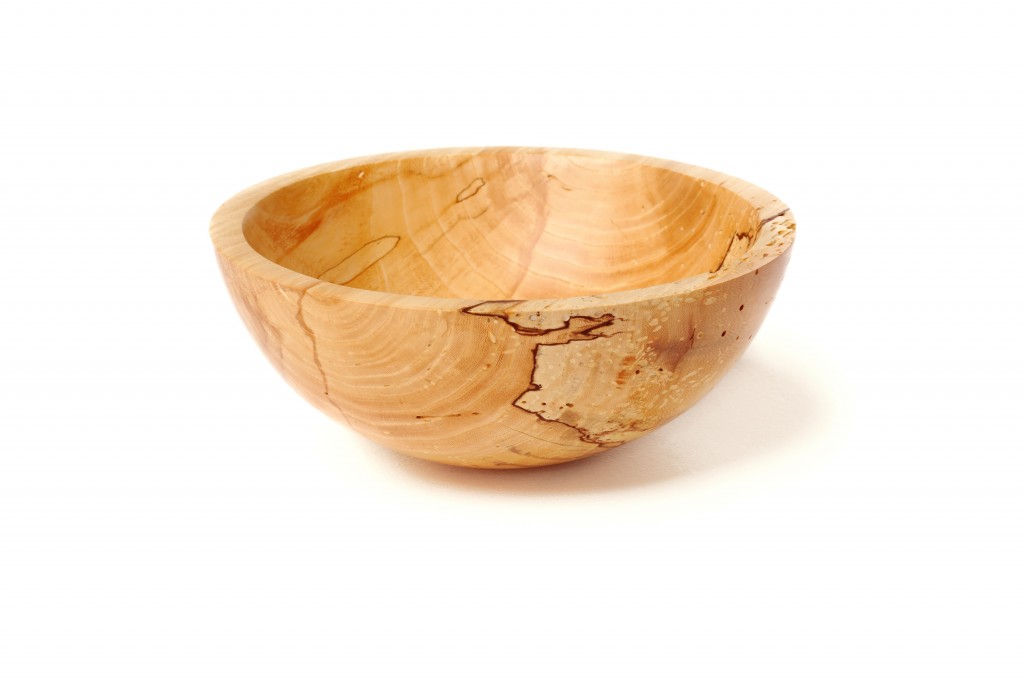
By Nick Clayson
Today, I am heading out to the shed to make a wooden bowl for eating out of. I have a large beech log liberated from Coole Park after the storms last year. Lady Gregory would have approved. It has been resting and I am hoping the fungal growth on the end of the log will have left the timber spalted, i.e., marked with black flecks, but not too soft to work. The wood will still be green (unseasoned). This is essential for working with a foot-powered pole lathe. I am growing to love working in this way. What began as learning to use a traditional and ancient tool has become a small but significant journey within. I was fortunate to spend a most enjoyable two days with Sharif Adams at the Steward Wood Community project. I learned how to roughly shape a bowl using an axe and mount it on the lathe.
Then to learn the tricky bit of how to get the long hook tools to cut. Sharif is a very skilled and patient teacher. At the end of my time there, I had a grasp of the basics. However, practising a new skill with expert guidance is very different from doing it on your own once you return home. My first bowl took me around eight hours and literally blood, sweat and tears. Think of it like learning to ride a bike, all the parts have to be there together or you have nothing. Like riding a bike, once you have it you have it and it is great, you forget about the painful phase of learning to pedal, balance, steer and look out where you’re going all at once.
There is a gentle rhythm to the pole lathe, pushing the treadle up and down with one leg. The tools are long and crook under your arm. It is a soothing process once you get the hang of it. Thin shavings of wood fly off and there is a wonderful scrunchy sound to accompany each cut.
The lathe I have made is a combination of scrap timber and a headstock hewn from a beech log. In the workshop I don’t have room for a six-metre birch pole so I have improvised a return spring using one of the many worn out bicycle inner tubes that I own. Each bowl takes on a life of its own. Ash is fibrous and teaches you how to keep tools sharp. Birch cuts and shapes easily. The beech log I’m working with today is beautiful and, although hard work, I am enjoying every second. The air is cold and the bowl spins in clouds of steam from my breath.
There is no need for cumbersome protective equipment. No ear-muffs, no gloves, no special boots, no glasses, no dust masks or any other health and safety paraphernalia to separate us from the world. I can hear birdsong and hold conversations (with myself) while working. Sights, sounds, scents, tastes, feeling it is very much a whole body practice. It makes me aware of how separate from the world our lives have become because all of these things should be very ordinary and a part of the every day, but for most of us, most of the time, they are not.
Nick Clayson is an architect, craftsman and yurt maker facebook.com/bigfootyurts

